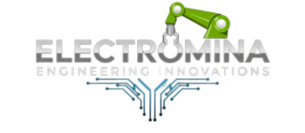Introduction
Semiconductors have become the foundation of modern electronics, enabling rapid technological advancements across various industries. Whether in automotive systems, telecommunications, or consumer devices, semiconductors play a crucial role in powering printed circuit boards (PCBs), the backbone of electronic devices.
What are Semiconductors?
At their core, semiconductors are materials with electrical conductivity between a conductor and an insulator. Silicon, the most commonly used semiconductor material, allows for precise control over electrical currents, making it ideal for integrating into electronic devices. Through processes like doping and oxidation, manufacturers can manipulate the electrical properties of semiconductors, tailoring them for specific applications.
How Semiconductors Power PCBs
In PCB design, semiconductors act as the heart of the circuit. These materials regulate power, manage data flow, and facilitate communication between various components. Components like transistors, diodes, and integrated circuits (ICs) are built using semiconductors, allowing for complex functionalities in a compact form. This enables efficient power management, heat regulation, and high-speed data transmission in devices ranging from smartphones to industrial machinery.
Advances in Semiconductor Technology
As technology advances, so do the capabilities of semiconductors. Innovations in materials, such as gallium nitride (GaN) and silicon carbide (SiC), are pushing the limits of efficiency and performance. These materials enable faster switching speeds, better thermal management, and improved energy efficiency. Additionally, the rise of 3D ICs, quantum computing chips, and nanotechnology are further revolutionizing PCB design and pushing industries toward more powerful and compact devices.
Applications in Different Industries
Semiconductors play a pivotal role across various industries. In the automotive sector, they control everything from engine management systems to advanced driver-assistance systems (ADAS). In telecommunications, semiconductors enable high-speed data transmission and 5G technology. For consumer electronics, they provide the processing power necessary for everyday devices like smartphones, laptops, and smart home devices. The industrial sector also benefits from semiconductors in robotics, automation systems, and energy-efficient machinery.
Conclusion
The future of semiconductors in PCB design is full of potential. With ongoing innovations, semiconductors will continue to enhance the performance and capabilities of electronic devices across all industries. Businesses should pay close attention to these advancements as they can significantly impact product development, performance, and market competitiveness.



